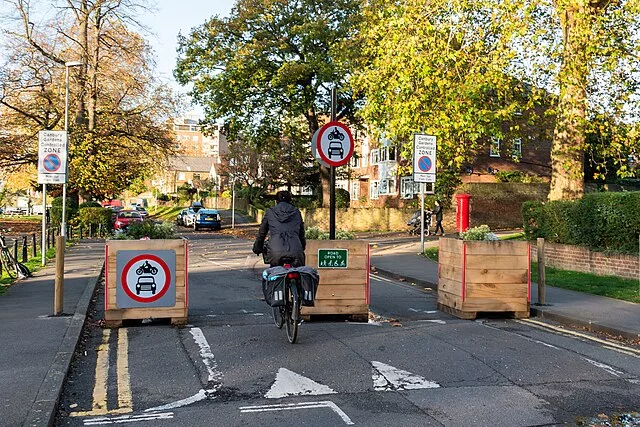Oxfordshire County Council voted last Tuesday to make the East Oxford Low Traffic Neighbourhoods (LTNs) permanent.
According to the Council’s report, this includes three LTNs in Divinity Road, St Clement’s, and St Mary’s areas introduced in May 2022, followed by protests and vandalism. Currently, motorised vehicles are forbidden, with some new exemptions, to improve conditions for residents, pedestrians, and cyclists.
Emily Kerr, Oxford City Councillor for St Mary’s Ward and Green Group spokesperson for transport, said in a press release: “Since the introduction of the East Oxford Low Traffic Neighbourhoods, cycling is up 20%, car use is down 10%, road collisions have halved, and children are walking, scooting and cycling to school at unprecedented rates due to the huge improvements in road safety.”
But opponents of the decision were vocal leading up to Tuesday’s vote. According to a joint report by Oxford Bus Company, Thames Travel and Stagecoach West, the companies support the promotion of sustainable modes of transportation, such as buses, above car use but oppose LTNs as a solution. Now, “a local bus journey in parts of East Oxford today takes so long to achieve that it is not a credibly relevant choice to any but the most physically infirm.”
A comment submitted by Magdalen College School to the Council echoes the bus companies’ joint report: “Prior to the LTNs, our buses took on average 7-9 minutes to travel from Headington School to Magdalen College School. When the LTNs were introduced, the buses started taking 35-55 minutes to make the same journey.”
LTNs have also impacted the bus companies’ operations. Shortly after the Council’s vote, a bus company employee told Cherwell that LTNs have meant longer working hours and thereby higher company costs. “It’s been a nightmare for the company,” the employee said.
While issues for buses persist, other stakeholders’ voices were heard. Thames Valley Police (TVP) submitted a comment detailing the impediments police vehicles face due to physical restrictions. The Oxfordshire Fire and Rescue Service and South Central Ambulance Service agree that they also experienced similar delays in response time.
In lieu of bollards, the emergency responders recommended the use of automatic number plate recognition (ANPR) cameras, which was adopted by the Council following a consultation period this summer. The newest plan includes exemptions for emergency vehicles, bin lorries, postal vans, and taxis.
The change attracted controversy from local residents: the Divinity Road Area Residents Association advocated for doubling down on the LTNs. They called for the continued use of bollards and a ban of taxis to protect pedestrians and cyclists, a spokesperson stated in a speech to the Council.
Meanwhile, other residents spoke out against LTNs: A Facebook group called “Anti LTN & Bus Gates Oxford” has garnered over 1,300 members with many posting about their objections. An Oxford resident told Cherwell that until pre-existing traffic congestion is solved, LTNs will only exacerbate the problem.
Still, the Council’s public consultation, conducted last year after a six-month trial period, attracted some more positive responses. Residents told the Council that led to “improved access and safety for pedestrians and cyclists” and “reductions in noise and pollution from traffic”.



